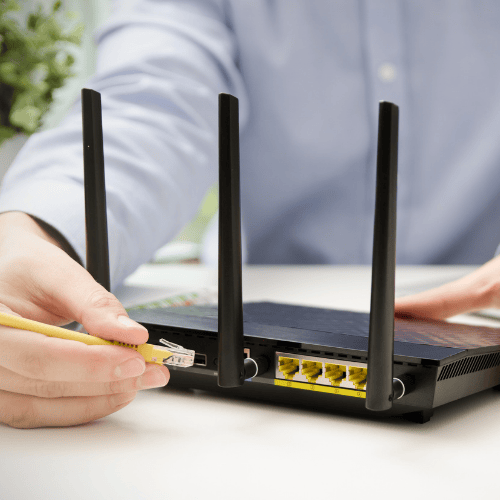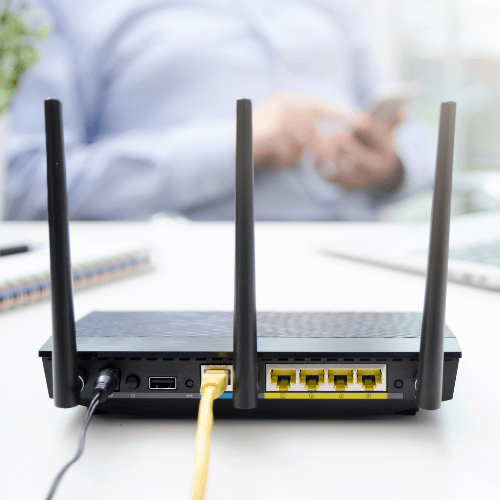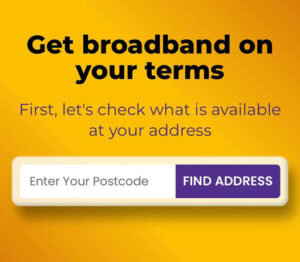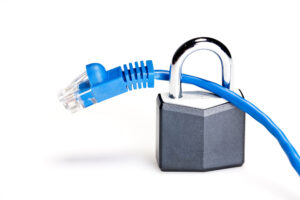Broadband Installation in the UK: Costs, Process, and What to Expect in 2025

We’ve all been there…
You find the perfect broadband deal — great speed, good price, decent reviews. You hit “order now,” expect it to be live in a day or two, and then…
“We’ll be in touch to schedule your installation in 10–14 working days.”
“An engineer visit is required.”
“Please wait at home between 8:00 AM and 6:00 PM.”
Suddenly, the excitement turns into frustration.
At Broadband Freedom, we’ve heard from countless people caught off guard by confusing installation timelines, hidden setup costs, and missed appointments. And in 2025, while broadband technology has come a long way, the installation experience can still be hit or miss depending on your provider and location.
That’s why we created this guide — to pull back the curtain and answer the questions nobody else does clearly:
- “How long does broadband take to install in the UK?”
- “Will I need an engineer to come out?”
- “What are the hidden costs?”
- “Can I set it up myself — and how?”
We’re going to walk you through:
- The full step-by-step installation process
- The average wait times by provider
- Engineer vs. self-install options (and which one’s better)
- The real costs behind “free” setups
- How to avoid the most common mistakes people make during install
- And which providers offer the fastest, easiest setup experiences
Whether you’re switching, upgrading, or moving into a new home, this guide will help you get connected faster, smoother, and without the usual headaches.
Let’s get started.
Do You Need an Engineer Visit?
This is probably the first question that pops into your head after signing up for broadband:
“Will someone need to come into my home to install it?”
The answer? It depends.
Not all broadband installations in the UK require an engineer in 2025. But if you’re switching to full fibre, moving into a new build, or upgrading from an older setup like ADSL, there’s a good chance you’ll need a professional on site.
Here’s how to know what to expect.
Factors That Determine Engineer vs. Self-Install
| Situation | Engineer Visit Needed? |
|---|---|
| Upgrading to Full Fibre (FTTP) | ✅ Yes, usually required |
| Switching between Openreach-based providers (e.g. BT to Sky) | ❌ No, usually self-install |
| Moving into a property with no phone socket or fibre port | ✅ Yes |
| Using 5G Home Broadband | ❌ No, plug-and-play |
| Reconnection after long disconnection | ✅ Often needed |
Some providers — like BT Broadband, Sky, and TalkTalk — will run a line check during your order to determine this. Others, such as Hyperoptic, may always send an engineer if full-fibre access hasn’t been installed before.
Tip: Always confirm during checkout if an engineer is required. It affects both install time and cost.
What Is a Self-Install?
Self-installation means you receive a router and setup instructions by post, then plug it into an existing phone socket or fibre terminal.
Providers like italk and Cuckoo often encourage this for speed and simplicity.
Self-install is perfect if:
- You already have a live Openreach line
- You’re just switching from one standard broadband provider to another
- The previous tenants had the same infrastructure
Expect activation within 2–5 working days, and no need to wait around at home for a technician.
If speed and flexibility are top priorities, check our guides on:
No Contract Broadband
1-Month Rolling Deals
What Does an Engineer Installation Involve?
If an engineer is needed, here’s what to expect:
- Pre-visit SMS or email confirmation
- Engineer arrives within a set window (often 8AM–1PM or 1PM–6PM)
- They install or activate the master socket or fibre ONT (Optical Network Terminal)
- They test the line and set up your router if needed
Visits typically take 1–2 hours. Some providers like Virgin Media offer flexible appointment slots, but others may require a full-day window.
Need a step-by-step breakdown of what happens next? Check our Broadband Installation Guide.
Broadband Freedom Pro Tip:
If you’re moving into a rental, always ask the landlord or agent:
- “Is there a working phone socket or fibre port?”
- “Which provider was used previously?”
It could save you two weeks of waiting and an unnecessary engineer visit.
Step-by-Step: What to Expect During Setup

Whether you’re going full DIY or waiting for an engineer, knowing exactly what to expect during installation takes the stress out of getting connected.
Here’s a simple breakdown of what broadband installation looks like in 2025 — so you’re never caught off guard.
Step 1: Order Confirmation & Pre-Install Instructions
Once you place your broadband order, the provider will:
- Send a confirmation email or text
- Run a line availability check at your address
- Let you know if an engineer visit is needed
- Ship your router and welcome pack
Providers like BT and Sky usually deliver routers within 2–4 working days, while others like italk offer next-day dispatch.
Step 2: Engineer Visit (If Required)
If an engineer is scheduled, here’s how to prep:
- Clear the area around your phone socket or hallway
- Ensure someone 18+ is home for the appointment
- Have the router and any setup instructions ready
During the visit, the engineer will:
- Fit a master socket (for FTTC) or ONT box (for FTTP)
- Test the signal strength and line quality
- Connect and configure your router
- Confirm that the internet is live and working
Typical time: 60–90 minutes
Expect basic cabling and wall work if it’s a new full-fibre install.
Step 3: Self-Installation (No Engineer Needed)
If you’re doing it yourself, the setup steps are usually:
- Plug the router into your master socket or fibre port
- Connect the power cable and switch it on
- Wait for the LED to turn solid green or blue
- Enter the Wi-Fi password (found on the back of your router)
- Test your connection on a laptop or phone
Most providers offer a companion app or web dashboard to:
- Change Wi-Fi names
- Enable parental controls
- Check signal strength
Pro Tip: Check your speed post-install using our Ultimate Guide to Internet Speed Tests — it helps confirm if your setup is working as advertised.
Step 4: Activation & First-Day Speed Check
Even after everything is connected, it can take a few hours for the line to stabilise — especially on FTTC lines.
Expect:
- Slightly slower speeds for the first 24–48 hours
- Occasional drops as the line “settles”
- A performance jump after the first reboot
If you’re not seeing results by Day 2, contact your provider’s support or check out our Broadband Troubleshooting Tips for help.
Step 5: Line Test & Support (If Things Go Wrong)
Let’s be honest — not all installs go perfectly. But most issues have simple fixes:
| Issue | Likely Fix |
|---|---|
| No connection after setup | Reboot router, check line status online |
| Weak signal upstairs | Use a Wi-Fi booster (often free with some deals) |
| Delayed activation | Call provider; ask for manual activation |
| Engineer no-show | Reschedule ASAP — some give £25–£50 credit |
Use your provider’s live chat or phone line to escalate early — the quicker the response, the less downtime you’ll suffer.
Typical Installation Timelines — How Long Each Provider Takes in 2025
So, how long does broadband installation really take in the UK today?
While providers love to promise “quick setup,” the actual timeline can vary wildly depending on:
- Your location
- The provider you choose
- Whether you need an engineer
- And the broadband type (standard vs full fibre)
Let’s break it down clearly — no vague promises, just realistic timeframes based on what we’re seeing in 2025.

Self-Install: The Fastest Route (2–5 Days)
If your home already has an active line or fibre port, most providers will:
- Ship your router within 1–2 working days
- Activate your line remotely within 2–5 days
- Get you up and running with zero engineer involvement
This is common with:
Want a flexible setup? Compare options in our No Contract Broadband Hub.
Engineer Install: Average 7–14 Working Days
If your property requires an engineer, the average install window is:
- 7–10 days in urban areas
- 10–14 days in rural or fibre expansion zones
This applies when:
- You’re upgrading to Full Fibre Broadband
- It’s a first-time connection in a new build
- The property has no existing BT or fibre socket
Providers like Community Fibre and Virgin Media often offer weekend slots — but demand can delay appointments.
Rural Areas or New Builds: Expect 14–21 Days+
If you’re in a:
- Rural location without full Openreach coverage
- New build with no prior internet setup
- Area where local fibre rollout is still underway
…prepare for delays of up to 3 weeks or more.
This is common with:
We recommend confirming your status with a Broadband Deals Near Me postcode check before committing.
Quick Timeline Comparison (At a Glance)
| Provider | Self-Install Time | Engineer Install Time |
|---|---|---|
| BT Broadband | 3–5 days | 7–10 days |
| Sky | 2–4 days | 5–7 days |
| Virgin Media | 2–3 days | 7–14 days |
| Community Fibre | 2–5 days | 7–10 days |
| Fibrus | — | 10–20 days |
| Brsk | 2–3 days | 5–7 days (in coverage zones) |
| Hyperoptic | 3–6 days | 7–14 days |
Use our Compare Broadband Deals tool to sort providers by fastest install, no engineer required, and setup cost.
Installation Costs by Provider — What’s Free and What’s Hidden
Here’s the thing most broadband providers don’t shout about:
Installation isn’t always free.
And when it’s not, the fees are often buried deep in the checkout flow or terms and conditions.
At Broadband Freedom, we believe you should never be blindsided by a surprise £60 setup charge or mandatory equipment fee.
So in this section, we’re laying it all out — the actual costs of installation in 2025, provider by provider, and what to look out for before clicking “confirm order.”
The 3 Types of Setup Costs You’ll Encounter
Before we break it down by provider, here’s what “installation” costs can actually include:
- Activation Fee
A one-time charge just to get your line live — often £10–£25. - Engineer Call-Out Fee
If your install requires a technician, expect £30–£60 unless it’s bundled in. - Equipment Fee
Some providers charge extra for routers, Wi-Fi boosters, or mesh kits — and they may be “optional” but necessary for performance.
Free Installation Providers (No Hidden Charges)
These brands currently offer zero setup fees on most standard deals:
| Provider | Setup Fee | Router Fee | Conditions |
|---|---|---|---|
| Brsk | £0 | £0 | Free install with active coverage |
| Community Fibre | £0 | £0 | All packages include free install + router |
| Cuckoo | £0 | £0 | Rolling contracts + no setup charge |
| Hyperoptic | £0 | £0 | Most full fibre plans include free install |
Explore more in our Broadband with Free Gifts roundup — many free install deals come bundled with extras too.
Setup Fees You Need to Watch For
| Provider | Setup Fee | Router/Equipment | Fine Print |
|---|---|---|---|
| BT Broadband | £29.99 | Free router | Setup fee waived on some 24mo contracts |
| Sky Broadband | £19.95 | Free Sky Hub | Fee varies by package and promo |
| Virgin Media | £35 | Free router | Sometimes waived for new customers |
| Fibrus | £40–£50 | Free ONT & router | Installation fee common in rural areas |
| italk | £24.95 | Free router | Lower fee, but only on 12-month contracts |
Broadband Freedom’s Rule of Thumb
If a provider doesn’t show installation cost on the homepage, dig into the FAQs or checkout page.
Many charge only if you cancel early or require a second engineer visit. Others bundle the setup into the first month’s bill and label it “connection fee.”
We break this down clearly in every offer listed on:
Best Providers for Quick & Easy Installation — Who Gets You Online Fastest in 2025
Let’s be honest:
No one wants to wait three weeks to get online.
Whether you’ve just moved house, switched provider, or your old connection is driving you mad, you want broadband installed fast, hassle-free, and without a maze of steps.
So, who’s actually delivering the smoothest installation experiences in 2025?
At Broadband Freedom, we’ve reviewed thousands of customer experiences, tracked setup timelines across providers, and pulled insights from Trustpilot and support forums to help you avoid the slow lanes.
Here’s what we’ve found 👇
Top 5 Providers for Seamless Installation
| Provider | Why They’re Great | Average Install Time |
|---|---|---|
| Brsk | Local engineers, same-week installs in active zones, plug-and-play setup in many cases | 3–5 working days |
| Community Fibre | Free install, pre-bookable engineer slots, same-day activation for in-building rollouts | 2–5 working days |
| Cuckoo | No contracts, free delivery, straightforward self-install kits | 2–4 working days |
| Virgin Media | Good at same-day or next-day engineer dispatch in urban areas | 2–7 working days |
| italk | Easy self-installation on most lines, good for homes with active Openreach sockets | 3–6 working days |
Need flexible contracts with easy setup? Start with our Compare No Contract Deals page — filtered for providers with fast turnaround and zero install fees.
🛑 Providers to Avoid If You’re in a Hurry
Not all ISPs are setup-speed champions. Some have longer lead times due to rural coverage, limited engineer availability, or strict install routing:
- BT Broadband – Can take up to 14 days for full fibre
- Fibrus – Excellent for rural fibre, but slower (10–20 days) due to engineer demand
- Sky – Usually reliable but sometimes lags in appointment availability post-purchase
- Hyperoptic – Fast in covered buildings, but may require multiple visits in new locations
Use our Broadband Deals Near Me tool to instantly rule out providers with long lead times in your postcode.
What Real Customers Are Saying
We consistently see 5-star reviews for:
- Community Fibre: “Engineer was early, installed everything in under an hour.”
- Brsk: “They had me up and running 48 hours after signing up. Unreal service.”
- Cuckoo: “Plugged it in, was online in 10 minutes. Support was responsive too.”
The key factor? Speed + simplicity.
If your setup requires a three-step install form, multiple calls, or long email chains — you’re already in trouble.
Want It Fast? Here’s What to Do
If getting online fast is your #1 priority:
- Choose self-install options where available
- Filter providers by setup fee = £0 to avoid delays
- Avoid rural-first networks unless you’re in their core zone
- Use our curated list of Broadband Providers to explore all setup timelines
And if you’re really in a crunch, consider 5G home broadband — it’s plug-and-play and activates in under an hour.
Final Thoughts — Master Your Broadband Installation, Avoid the Headaches
Let’s face it:
Broadband installation shouldn’t be a mystery.
You shouldn’t have to guess whether you need an engineer… or wait two weeks… or pay surprise fees just to get online.
And yet — in 2025, many UK households still find themselves:
- Chasing routers in the post
- Wondering if their internet is “activated yet”
- Dealing with confusing setup timelines
- Or stuck on hold with a support agent who “can’t find your order”
At Broadband Freedom, we’re here to change that.
What You Should Now Know
By now, you’ve learned:
- When you’ll need an engineer (and when you won’t)
- What to expect during self-install vs full-fibre activation
- Average setup timelines by provider — not just the sales pitch
- Who offers fast, free, reliable installation in 2025
- How to dodge common traps like surprise fees or setup delays
What You Should Do Next
Whether you’re moving house, upgrading speeds, or switching from a nightmare provider — we’ve got the tools to help you get set up the right way, fast:
- Compare Broadband Deals — instantly sort by setup speed, cost, and contract
- Broadband Near Me — check who actually covers your postcode
- Free Install & No-Contract Deals — find flexible options with zero commitment
- Broadband Installation Guide — bookmark it, share it, refer back anytime
Final Word
Your internet connection is the backbone of your digital life — from remote work to weekend Netflix, from gaming to video calls with loved ones.
You deserve broadband that works from Day 1.
No stress. No surprises. Just speed, support, and simplicity.
And that starts with the right installation experience.
We’re Broadband Freedom — and we’re here to make sure you get connected without compromise.



